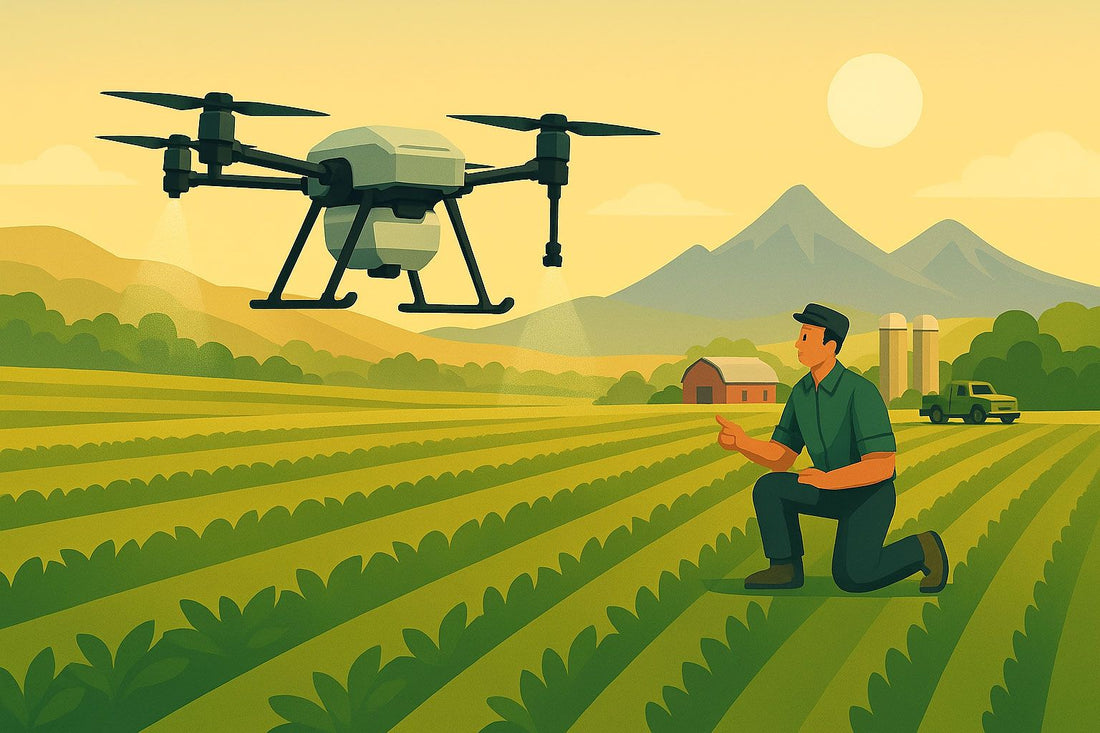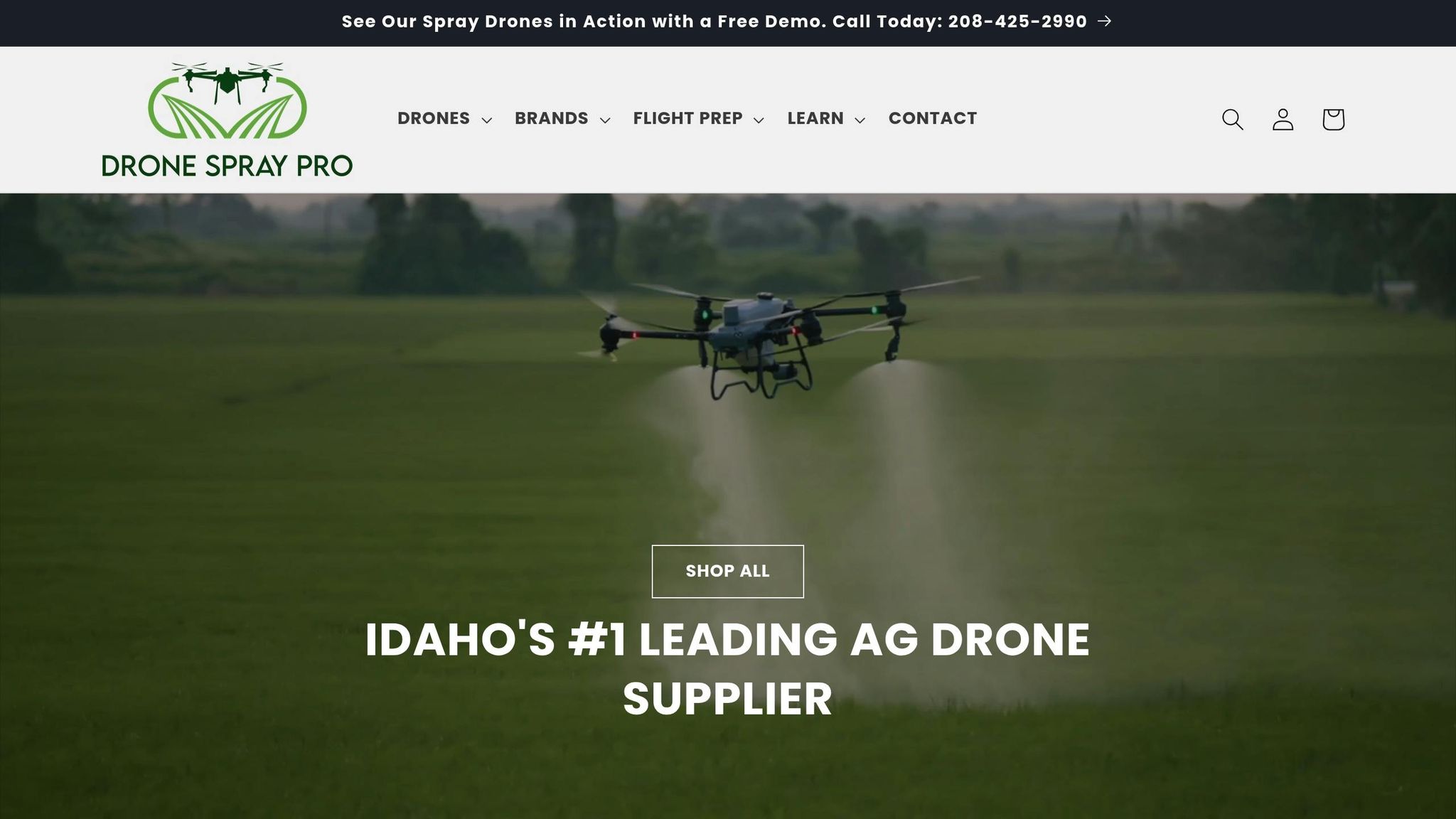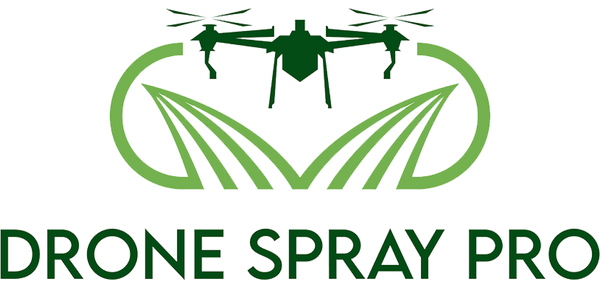
Drone Spraying in Southeast Idaho: Local Resources and Case Studies
Share
Drone spraying is transforming agriculture in Southeast Idaho. It saves time, reduces costs, and improves weed control - especially in tough terrains like hillsides and rocky areas. For example, tasks that once took days with manual labor are now completed in hours using drones. Here's why this technology matters:
- Saves Time and Labor: A 5-acre hillside that took 4 days with backpack sprayers now takes just a few hours with drones.
- Precision Application: Drones use GPS for accurate spraying, reducing chemical use by 30–50%.
- Cost Efficiency: Operating costs can be as low as $12.27 per acre for farmers.
- Safety: Workers avoid exposure to chemicals and dangerous terrains.
Farmers can start by choosing the right drone, getting FAA certifications, and working with local providers like Drone Spray Pro for training and support. This technology is already helping treat over 6,000 acres annually in Fremont County and beyond.
Southeast Idaho Agriculture Profile
Major Crops and Methods
Southeast Idaho's agriculture thrives on a few standout crops. Potatoes are the star, with Idaho supplying nearly one-third of the nation's total. In 2023 alone, farmers harvested 143 million cwt of potatoes. The Snake River Valley is also a powerhouse for sugar beet farming, producing around 7 million tons that same year.
Other key crops include wheat, with 178 million bushels produced, and barley, where the region leads the nation in output. Hay and haylage also contribute significantly to the area's agricultural output. These crops require precise management practices to maximize yields while tackling pests effectively.
Current Farming Obstacles
Even with strong production numbers, farmers in Southeast Idaho face serious challenges due to the area's rugged terrain. Steep hillsides and rocky patches make traditional methods for managing invasive species less effective.
Noxious weeds are a persistent problem, threatening both rangelands and wildlife habitats. For example, the Jenkins family collaborated with Fremont County to restore a gravel pit's banks using drones for seeding. This highlights how tough landscapes affect both farming and land restoration efforts.
New Technology Usage
To tackle these challenges, many in the region are turning to drones. Fremont County's Weed Department uses drones to manage over 6,000 acres each year. These drones, equipped with 2-to-10 gallon tanks, can treat 5–30 acres per hour, covering as much as 300 acres in a single day.
This success has sparked further advancements. The Caribou-Targhee National Forest is now developing its own drone-based weed control program, recognizing how effective drones are for navigating difficult terrain.
"The drones have found their place in our county. They've performed well. We enjoy using them. They've done a good job." - Chase Hirschi, assistant weed manager for Fremont County
Drone Spraying Services in Southeast Idaho
Drone Spray Pro Services

Drone Spray Pro is a the number one agricultural drone supplier in Southeast Idaho. They cater to the unique needs of local farmers with a variety of advanced drone models equipped for efficient spraying. These drones come with features like real-time mapping and obstacle avoidance, making them well-suited for the region's challenging landscapes.
Their service packages include everything from an initial consultation to equipment setup and technical support. Drone Spray Pro is run by local Idaho farmers who actively deploy sprayer drones in their own operation. They can assist with customized equipment and detailed training to ensure farmers maximize the benefits of drone technology.
Equipment and Training Options
Drone Spray Pro provides a range of drones tailored for different farming needs. Their lineup includes:
To support farmers in using these drones effectively, they offer training programs that cover:
- Preparing for FAA Part 107 certification
- Hands-on flight practice
- Spray calibration techniques
- Emergency procedures and maintenance tips
Local Service Coverage
Drone Spray Pro operates throughout Southeast Idaho, backed by a team of local farmers who use the technology themselves. These technicians can provide maintenance and support to minimize downtime and address field issues upon request. Their drone packages are specifically designed to meet the diverse needs of Idaho's farming community, ensuring reliable and efficient service.
Southeast Idaho Success Stories
Potato Farm Results
In South Fork Canyon, a recent drone application on a 5-acre hillside turned what used to be a four-day backpack spraying job into just a couple of hours. This method delivered precise and consistent coverage, offering a game-changing solution for potato farms.
Grain Field Improvements
At Caribou-Targhee National Forest, drones have made treating hard-to-reach areas much easier. For example, what used to take an entire day at Island Park Dam now takes just 10–20 minutes. Plus, this approach eliminates the need for exhausting manual labor in tough terrain. Local farmers have been quick to praise these advancements.
Farmer Results and Feedback
These technological upgrades have boosted farm productivity across the region. In Fremont County, over 6,000 acres are now treated annually using drones. Beyond traditional spraying, drones have also shown their flexibility. Partnering with Jenkins Gravel, drones equipped with seed attachments were used to reclaim gravel pit banks after the Teton Dam failure.
Other key advantages include:
- Precision spraying: Accurate within 5 centimeters
- High efficiency: Covers up to 60 acres per hour at a 2-gallon-per-acre application rate
sbb-itb-3b7eef7
Equipment and Methods Guide
Drone Features Guide
Agricultural drones in Southeast Idaho come equipped with advanced features designed for efficient and precise operations. For instance, the DJI Agras T50 can cover up to 50 acres per hour, thanks to its specialized atomizing spraying system. Its centrifugal nozzles ensure accurate droplet sizes ranging from 50μm to 500μm, making it versatile for various agricultural needs.
Here are some of the drone's key technical features:
- RTK-compatible GPS modules for pinpoint accuracy (centimeter-level precision)
- Terrain-sensing radar to maintain consistent flying height
- Obstacle avoidance systems for safer operations
- Spreading capacity of up to 1,500 kg per hour
The foldable design makes it easy to transport between fields, while its rugged construction ensures it can handle tough agricultural conditions. For added flexibility, the system supports extra sprinklers to adjust flow rates based on crop requirements.
These capabilities highlight the importance of strict safety protocols and certifications to ensure smooth operation.
Safety and Usage Guidelines
To operate drones effectively and safely in Southeast Idaho, farmers must follow specific safety standards and obtain the necessary certifications. Before flying, the following certifications and documentation are required:
- FAA Part 107 certification
- FAA Part 137 certification
- Pesticide Applicator License
- Liability insurance coverage
Proper mission planning is also crucial. Using digital obstacle mapping during the planning phase helps reduce risks and ensures consistent coverage throughout the operation.
Cost and Efficiency Data
Understanding the financial side of drone operations is just as important as following safety protocols. Costs can vary depending on how frequently the equipment is used. Here’s a breakdown of the primary equipment costs:
| Equipment Component | Farmer Operation | Custom Operation |
|---|---|---|
| Basic Drone Package | $23,000 | $23,000 |
| Generator | $7,500 | $7,500 |
| Trailer | $9,000 | $14,500 |
| Tank & Pump System | $1,000 | $1,500 |
| Individual Batteries | $2,500 | $2,500 |
Cost efficiency starts at around 980 acres annually, which equals about 37.69 flight hours. At this scale, the operating cost averages $12.27 per acre for farmers compared to $16 per acre for custom hire services.
To keep costs manageable and improve efficiency:
- Limit battery purchases to what’s essential for operations
- Use active cooling systems to speed up battery recharging
- Scale up operations to lower per-acre costs
- Consider field conditions and terrain when planning missions
Suppliers like Drone Spray Pro offer ready-to-fly bundles to simplify the setup process. Here are two popular options:
- Basic Bundle: DJI Agras T40 Drone, DJI RC Plus Remote Controller, T40 Batteries (3x) and other accessories.
- Advanced Bundle: Talos T60X, Remote, 1 Charger, 1 Battery, & Battery Adapter Cable
Conclusion
Main Points Review
The use of drone spraying technology in Southeast Idaho has led to major improvements in efficiency and cost savings. For instance, Fremont County's ability to quickly treat difficult terrains highlights the advantages of this approach.
Here are the key benefits:
- Time Efficiency: Tasks that used to take days are now done in just hours.
- Improved Coverage: Sprays are more evenly distributed, with fewer missed spots or overlaps.
- Enhanced Safety: Field workers face fewer risks during operations.
- Cost Savings: Lower labor costs and better use of resources.
"I've actually seen more effective control with drones, in my opinion. Better coverage, no skips over overlaps, plants are reacting faster; I'd say they're doing great."
– Chase Hirschi, assistant weed manager for Fremont County
These advantages create opportunities for local farmers to modernize their practices.
Next Steps for Farmers
Farmers looking to adopt drone spraying technology can take advantage of local expertise to get started. Drone Spray Pro provides support with equipment, licensing, and training. Here's how to begin:
- Choose the Right Equipment: Select pre-packaged drones that fit the size of your operation.
- Get Certified: Secure FAA Part 107 and Part 137 certifications.
- Invest in Training: Work with local providers to learn safe and effective drone operation.
- Plan Your Operations: Start small, focusing on a limited area to gain experience.
Local providers like Drone Spray Pro can help farmers make this transition smoothly. Sharing equipment costs with others or using contract services can also make this technology more affordable. For example, the Jenkins Gravel case study shows how partnering with county resources can lead to successful drone spraying projects.
Drones accelerate noxious weed control in Eastern Idaho
FAQs
What steps do farmers in Southeast Idaho need to take to start using drones for spraying, and what certifications are required?
Farmers in Southeast Idaho looking to start drone spraying should first research local agricultural needs and regulations. A great starting point is reaching out to local agricultural offices, such as the Fremont County Weed Control office, to learn how drones are being used to manage noxious weeds in the region.
To operate a drone for spraying, you’ll need the proper certifications. This typically includes obtaining a Part 137 Agricultural Aircraft Operator Certificate, which is required for aerial application. Additionally, ensure you comply with FAA regulations for commercial drone use, including holding a Part 107 Remote Pilot Certificate.
Why is drone spraying especially effective for Southeast Idaho's unique agricultural terrain?
Drone spraying is particularly effective in Southeast Idaho due to the region's challenging and varied terrain. Steep slopes, uneven ground, and hard-to-reach areas can make traditional spraying methods inefficient or even unsafe. Drones can easily navigate these obstacles, ensuring precise application without the need for heavy machinery or manual labor.
Additionally, drones are well-suited for fields with obstacles like trees, power lines, or buildings. Their ability to operate in tight spaces and adapt to different conditions makes them an ideal solution for farmers looking to increase efficiency and safety in their spraying practices.
How does drone spraying save money and improve safety compared to traditional agricultural methods?
Drone spraying offers significant advantages in both cost savings and safety over traditional methods. For instance, drones can cover up to five acres in just a few hours, whereas a team using backpack sprayers might take several days to treat the same area. This efficiency reduces labor costs and operational time.
In terms of expenses, owning a drone for spraying can cost around $12.27 per acre, which is more affordable compared to hiring custom spraying services at approximately $16 per acre. Additionally, drones enhance safety by eliminating the need for workers to navigate dangerous terrain, such as steep slopes or rocky areas, reducing the risk of accidents and injuries.
